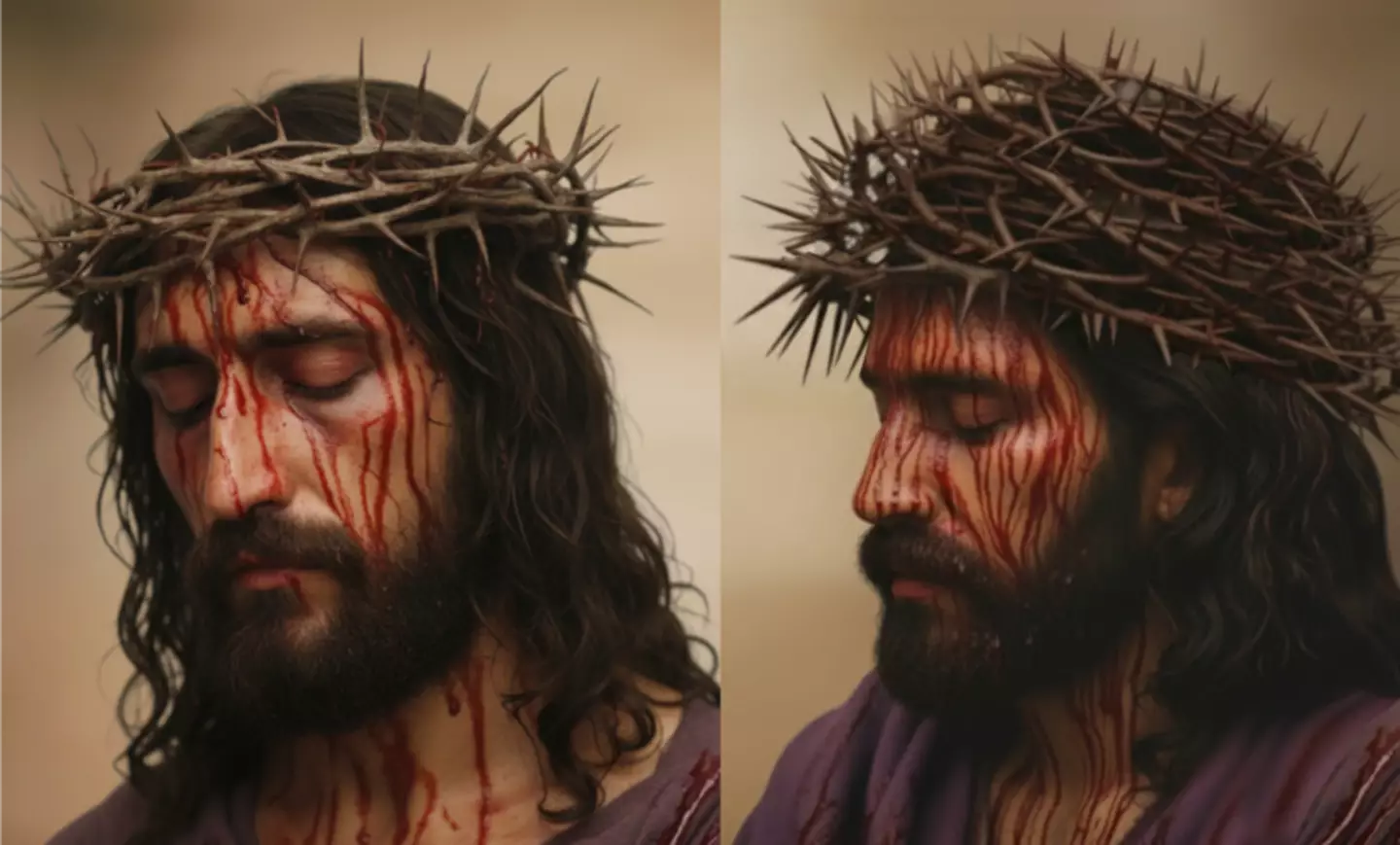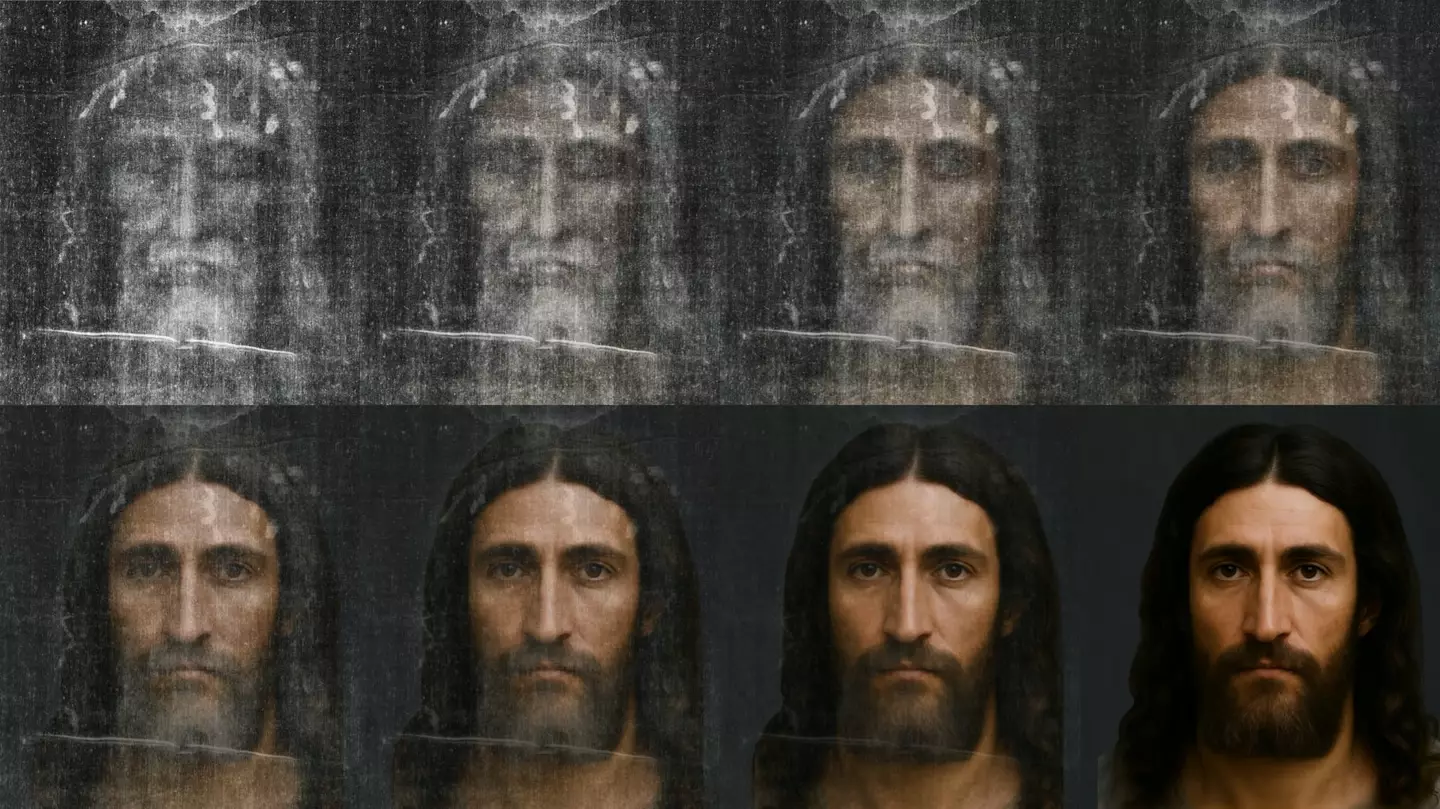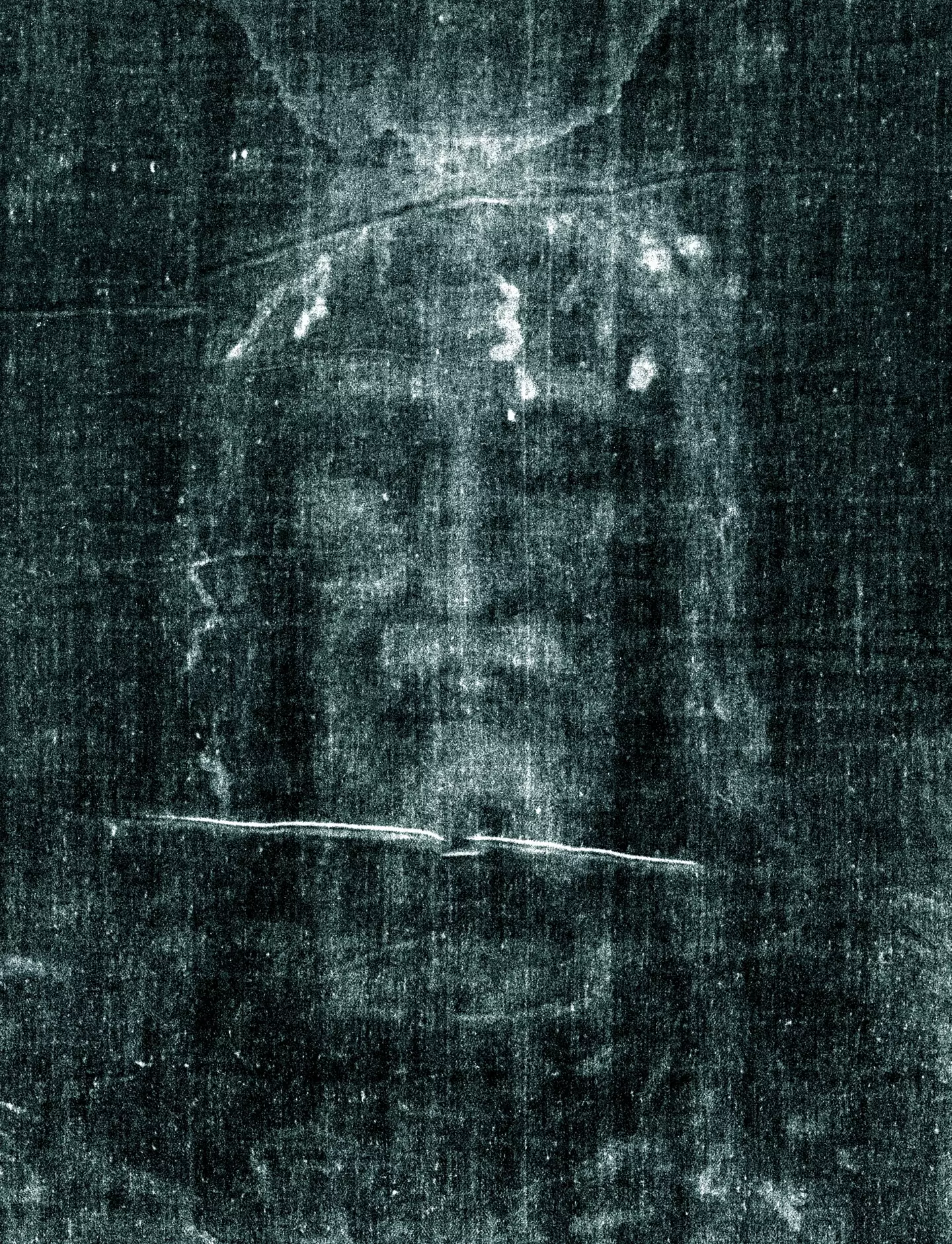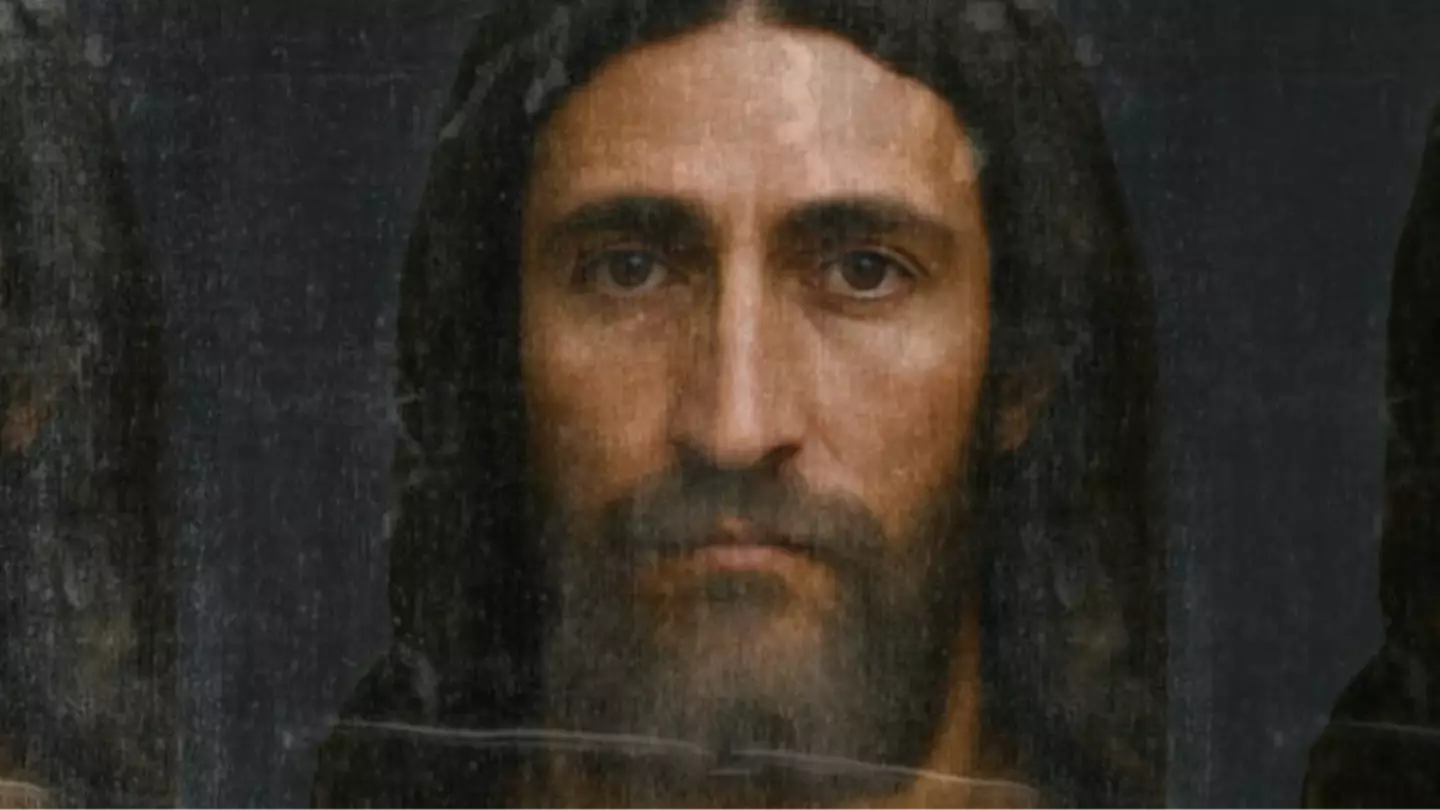A recent study has been published by a researcher who claims to have ‘confirmed’ a significant aspect of Jesus’ narrative.
Otangelo Grasso, who identifies as a ‘Young Earth Creationist’ and an ‘intelligent Design proponent’, has authored a paper detailing his analysis of the Shroud of Turin’s image.
The Shroud is a well-known piece of cloth, famous for displaying an image resembling a figure believed to be Christ-like.
A significant number of people hold the belief that this cloth represents the one used to wrap Jesus during the three days he was entombed following his crucifixion and prior to his resurrection.
Grasso has utilized AI technology to create a projection of the image outline on the shroud, examining wound and blood patterns to explore aspects of Jesus’ suffering.

One such aspect is the crown of thorns that Jesus was purportedly forced to wear during his torture and subsequent death.
Grasso suggests that the patterns derived from his analysis can provide insights into the type of crown used to cause the injuries.
In his study, he writes: “From the front, the crown sits below the apex and compresses the hair at the brow and temples; inward-angled thorns enter tangentially and create vertical rivulets that follow skin furrows and, at the temples, the course of trigeminal branches, echoing the Shroud’s forehead/nasion clots.”
Grasso investigates whether the crown resembled a cap or a circlet, concluding that a circlet is more plausible given the wound patterns and its ease of construction.

Grasso continues: “A helmet-like dome implies frequent superior-scalp lesions; with other head wounds still transferring at burial, one would expect traces across the bridge.
“Their absence pushes the solution toward a low-seated circlet or shallow capiform wreath.”
His study even ventures into identifying the types of thorny plants that could have been used to craft the infamous crown, considering how these thorns might have resulted in specific puncture patterns on a forehead.
Another study by Grasso on this theme states: “Shroud head-stain mapping, a clean vertex bridge amid otherwise active head/face transfer potential, experimental inward-spine mechanics, posture-driven posterior elevation, and the build-time/manipulation differential together provide support for a circlet over a cap.”
The crown of thorns remains a subject of debate, as art historians argue that the depiction of a bloodied Jesus wearing it is actually a medieval creation stemming from a mistranslation of the Bible, rather than a reflection of contemporary accounts of Jesus.

While the Shroud of Turin’s authenticity is supported by many, it has been controversial since the Medieval period, and its true origins remain uncertain.
The Shroud’s earliest documentation dates back to 1354, when it reportedly belonged to a knight named Geoffroi de Charnay, seigneur de Lirey.
When displayed in 1389, the Bishop of Troye declared it a forgery, claiming it was ‘cunningly painted, the truth being attested by the artist who painted it.’
The papacy initially approached the Shroud with caution, with the antipope Clement VII permitting its use as an object of devotion only if referred to as an ‘image or representation’.
In 1988, carbon dating by three separate labs dated the Shroud’s origin to between 1260 and 1390, suggesting it is a medieval artifact, not from Jesus’ era.
A study in 2022 employed wide-angle X-ray scattering on a piece of the shroud, suggesting that the fabric may have origins dating back to around 55–74AD. However, researchers called for further study to confirm these findings.
Though these dates are nearer to Christ’s time, they are still about 50 years off and don’t account for the possibility that fabrics could have been reused or altered over the years.

